
|
Astronomy Picture Of the Day (APOD)
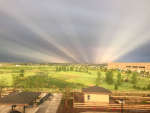 Anticrepuscular Rays over Colorado II
Anticrepuscular Rays over Colorado II
26.06.2016
What's happening over the horizon? Although the scene may appear somehow supernatural, nothing more unusual is occurring than a setting Sun and some well placed clouds. Pictured above are anticrepuscular rays. To understand them, start by picturing common crepuscular rays that are seen any time that sunlight pours though scattered clouds.
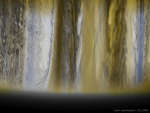 Jupiters Clouds from New Horizons
Jupiters Clouds from New Horizons
25.06.2016
The New Horizons spacecraft took some stunning images of Jupiter on its way out to Pluto. Famous for its Great Red Spot, Jupiter is also known for its regular, equatorial cloud bands, visible through even modest sized telescopes.
 Strawberry to Honey Moonrise
Strawberry to Honey Moonrise
24.06.2016
Near the horizon the Full Moon often seems to loom large, swollen in appearance by the famous Moon illusion. But timelapse images demonstrate that the Moon's apparent size doesn't really change as it climbs toward the zenith. Its color does, though.
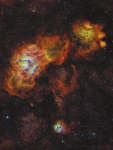 Sagittarius Sunflowers
Sagittarius Sunflowers
23.06.2016
These three bright nebulae are often featured in telescopic tours of the constellation Sagittarius and the crowded starfields of the central Milky Way. In fact, 18th century cosmic tourist Charles Messier cataloged...
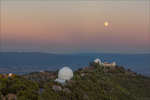 Solstice Dawn and Full Moonset
Solstice Dawn and Full Moonset
22.06.2016
A Full Moon sets as the Solstice Sun rises in this June 20 dawn skyscape. Captured from a nearby peak in central California, planet Earth, the scene looks across the summit of Mount Hamilton and Lick Observatory domes on a calendar date that marks an astronomical change of seasons and hemispherical extremes of daylight hours.
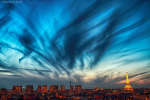 Cirrus over Paris
Cirrus over Paris
21.06.2016
What's that over Paris? Cirrus. Typically, cirrus clouds appear white or gray when reflecting sunlight, can appear dark at sunset (or sunrise) against a better lit sky. Cirrus are among the highest types of clouds and are usually thin enough to see stars through.
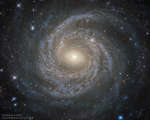 NGC 6814: Grand Design Spiral Galaxy from Hubble
NGC 6814: Grand Design Spiral Galaxy from Hubble
20.06.2016
In the center of this serene stellar swirl is likely a harrowing black-hole beast. The surrounding swirl sweeps around billions of stars which are highlighted by the brightest and bluest. The breadth and beauty of the display give the swirl the designation of a grand design spiral galaxy.
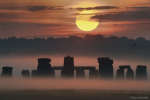 Sunrise Solstice over Stonehenge
Sunrise Solstice over Stonehenge
19.06.2016
Today the Sun reaches its northernmost point in planet Earth's sky. Called a solstice, the date traditionally marks a change of seasons -- from spring to summer in Earth's Northern Hemisphere and from fall to winter in Earth's Southern Hemisphere.
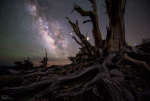 Galaxy and Planets Beyond Bristlecone Pines
Galaxy and Planets Beyond Bristlecone Pines
18.06.2016
What's older than these ancient trees? Nobody you know -- but almost everything in the background of this picture. The trees are impressively old -- each part of the Ancient Bristlecone Pine Forest located in eastern California, USA.
 Sputnik Planum vs. Krun Macula
Sputnik Planum vs. Krun Macula
17.06.2016
Pluto's pitted plains meet rugged highlands in this stunning view. On the left lies a southeastern extent of the bright region still informally known as Sputnik Planum. At right the edge of a dark region, informally Krun Macula, rises some 2.5 kilometers above the icy plains.
|
January February March April May June July August September October November December |
|||||||||||||||||||||||||||||||||||||||||||||||||